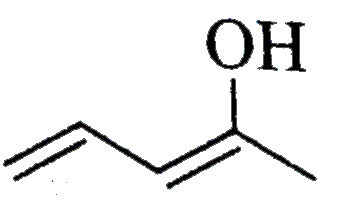Draw all the resonating strucutres of the carbonate ion.
To draw all the resonating structures of the carbonate ion (CO₃²⁻), we can follow these steps:
Step 1: Determine the Lewis Structure of Carbonate Ion
- The carbonate ion has a total of 4 valence electrons from carbon (C) and 6 from the three oxygen (O) atoms, plus 2 additional electrons due to the 2- charge.
- This gives us a total of 4 + (3 × 6) + 2 = 24 valence electrons to work with.
Step 2: Identify the Central Atom
- Carbon is the central atom in the carbonate ion, surrounded by three oxygen atoms.
Step 3: Draw the Initial Structure
- Connect the carbon atom to the three oxygen atoms.
- Place one double bond between carbon and one of the oxygen atoms, and single bonds between carbon and the other two oxygen atoms.
- Distribute the remaining electrons to satisfy the octet rule for each atom.
Step 4: Assign Formal Charges
- Check the formal charges on each atom. The carbon atom will have a formal charge of 0, while the oxygen atoms will have formal charges of -1 for the two single-bonded oxygens and 0 for the double-bonded oxygen.
Step 5: Draw Resonating Structures
- The double bond can be moved between carbon and any of the three oxygen atoms, creating different resonating structures.
- Therefore, we can draw three resonating structures:
1. Double bond between carbon and the first oxygen, with the other two oxygens carrying a negative charge.
2. Double bond between carbon and the second oxygen, with the other two oxygens carrying a negative charge.
3. Double bond between carbon and the third oxygen, with the other two oxygens carrying a negative charge.
Step 6: Finalize the Resonating Structures
- Ensure that all structures have the same arrangement of atoms but differ in the placement of the double bond and the negative charges.
Summary of Resonating Structures
1. Structure 1: C=O (double bond) with O⁻ and O⁻ (single bonds).
2. Structure 2: C=O (double bond) with O⁻ and O⁻ (single bonds).
3. Structure 3: C=O (double bond) with O⁻ and O⁻ (single bonds).
- The carbonate ion has a total of 4 valence electrons from carbon (C) and 6 from the three oxygen (O) atoms, plus 2 additional electrons due to the 2- charge.
- This gives us a total of 4 + (3 × 6) + 2 = 24 valence electrons to work with.
- Carbon is the central atom in the carbonate ion, surrounded by three oxygen atoms.
- Connect the carbon atom to the three oxygen atoms.
- Place one double bond between carbon and one of the oxygen atoms, and single bonds between carbon and the other two oxygen atoms.
- Distribute the remaining electrons to satisfy the octet rule for each atom.
- Check the formal charges on each atom. The carbon atom will have a formal charge of 0, while the oxygen atoms will have formal charges of -1 for the two single-bonded oxygens and 0 for the double-bonded oxygen.
- The double bond can be moved between carbon and any of the three oxygen atoms, creating different resonating structures.
- Therefore, we can draw three resonating structures:
1. Double bond between carbon and the first oxygen, with the other two oxygens carrying a negative charge.
2. Double bond between carbon and the second oxygen, with the other two oxygens carrying a negative charge.
3. Double bond between carbon and the third oxygen, with the other two oxygens carrying a negative charge.
- Ensure that all structures have the same arrangement of atoms but differ in the placement of the double bond and the negative charges.
1. Structure 1: C=O (double bond) with O⁻ and O⁻ (single bonds).
2. Structure 2: C=O (double bond) with O⁻ and O⁻ (single bonds).
3. Structure 3: C=O (double bond) with O⁻ and O⁻ (single bonds).
Similar Questions
Draw the resonating structures of
 View Solution
View SolutionDraw the resonating structures of
 View Solution
View SolutionWhat is meant by resonance? Draw the resonating structures of carbonate ion and explain why all the C – O bond lengths are identical in carbonate ion?
View SolutionOrtho and para nitrophenols are more acidic than phenol. Draw the resonating structures of the corresponding phenoxide ions.
View Solutiondrawing OF resonating structures
View Solutiondrawing OF resonating structures
View SolutionDrw all the possible resonating structures for azide ion (N−3ion). Which our of these are actually feasible ?
View SolutionOrtho and para nitrophenols are more acidic than phenol. Draw the resonance structures of the corresponding phenoxide ions.
View SolutionOrtho and para nitrophenols are more acidic than phenol. Draw the resonance structures of the corresponding phenoxide ions.
View SolutionOrtho and para - nitrophenols are more acidic than phenol. Draw the resonance structures of the corresponding phenoide ions.
View Solution

